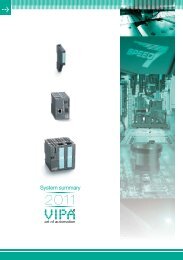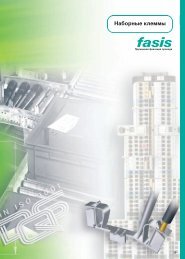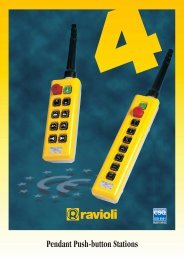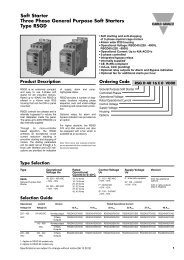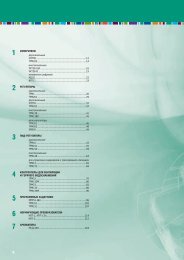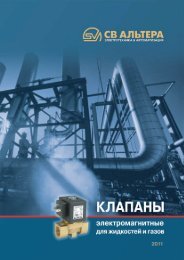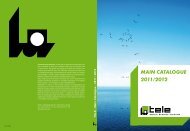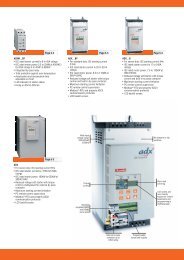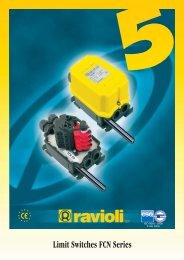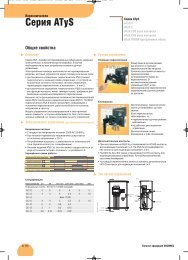IP 55 Modular Cabinets
IP 55 Modular Cabinets
IP 55 Modular Cabinets
Create successful ePaper yourself
Turn your PDF publications into a flip-book with our unique Google optimized e-Paper software.
FR - PARTIAL ENCASEMENT FRAME FOR CF-P<br />
GENERAL NOTES FOR CONDITIONERS<br />
Valid for all conditioners<br />
Fig. 170.1<br />
FR - PARTIAL ENCASEMENT FRAME<br />
This device makes it possible to partially eliminate the protrusion of the<br />
conditioner from the<br />
CODE Conditioner Weight cabinet, guaranteeing,<br />
in any case, an<br />
Kg <strong>IP</strong> 54 level of protection<br />
between the con-<br />
CF-P/356<br />
FR08<br />
ditioner and the cabinet.<br />
It is equipped<br />
CF-P/456 3,5 ÷ 6<br />
CF-P/856<br />
with airtight gaskets<br />
FR09<br />
CF-P/956<br />
7 ÷ 14 in rubber, already<br />
CF-P/1456<br />
installed on the border<br />
of the rabbet.<br />
FR09L CF-P/2056 7 ÷ 14<br />
FR10<br />
CF-P/2860<br />
10 ÷ 19 The frame is attached<br />
CF-P/4160<br />
to the wall of the cabinet<br />
with screws.<br />
The power yield is indicated according to DIN 3168 norms. The indications L35 L35 (or L35 L50) respectively indicate the<br />
internal temperature (L35) and the external temperature (L35 or L50) of the cabinet.<br />
If the power yield is L35 L35 (internal and external temperatures are the same (35° C)) the conditioner can dissipate internal<br />
heat more efficiently. The power yield will therefore be maximum and the absorbed power will be less than maximum.<br />
This is the most favourable working condition.<br />
In the event the power yield is L35 L50, the conditioner encounters greater difficulty in dissipating the heat, because the<br />
external temperature is high, consequently, there is less power yield and an increase of absorbed power. This is the most<br />
unfavourable working condition.<br />
Choosing a conditioner:<br />
You should be aware of the following information in order to choose a conditioner:<br />
1. Dimensions of the cabinet;<br />
2. Positioning of the cabinet (if free on all sides or which sides are against a wall);<br />
3. Dissipated power from equipment inside the cabinet in W (not installed equipment);<br />
4. Internal temperature it is desired to maintain in the cabinet, Ti;<br />
5. Maximum external temperature, Te;<br />
6. Required <strong>IP</strong><br />
BOZZA DI STAMPA<br />
With this information, apply to our technical office to obtain an immediate reply as to the most suitable type of conditioner.<br />
Generally, the table below indicates a possible choice of the type of conditioner, based on the <strong>IP</strong> desired and the internal and<br />
external temperatures of the cabinet.<br />
Level of cabinet protection Ti>Te Ti=Te Ti 54<br />
CF-P or CS-T Conditioners;<br />
SC-A Air-to-Air Heat Exchangers;<br />
SC-AH Air to Water Heat Exchangers<br />
CF-P or CS-T Conditioners;<br />
SC-AH Air to Water Heat Exchangers<br />
CF-P or CS-T Conditioners;<br />
SC-AH Air to Water Heat Exchangers<br />
21 CATALOGUE<br />
170




